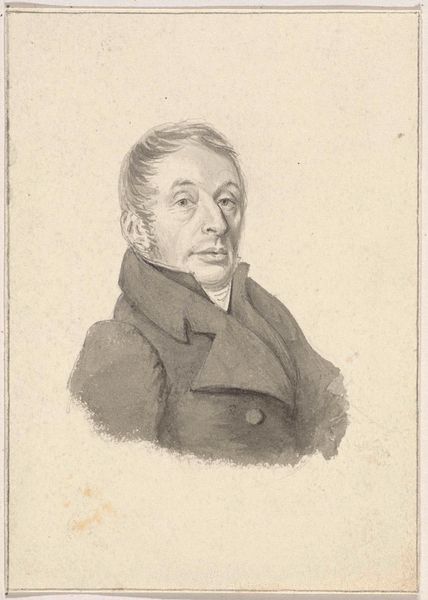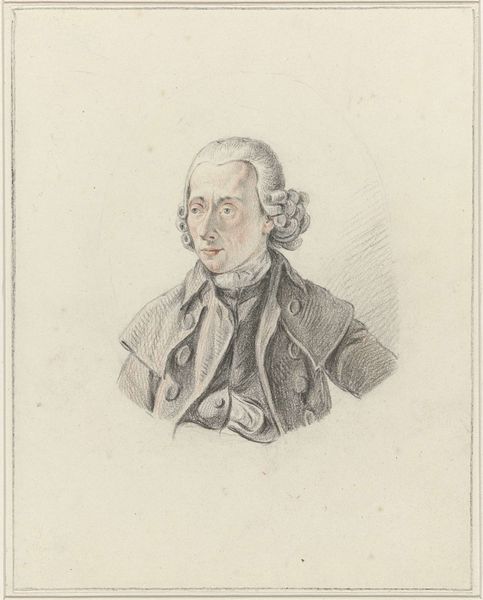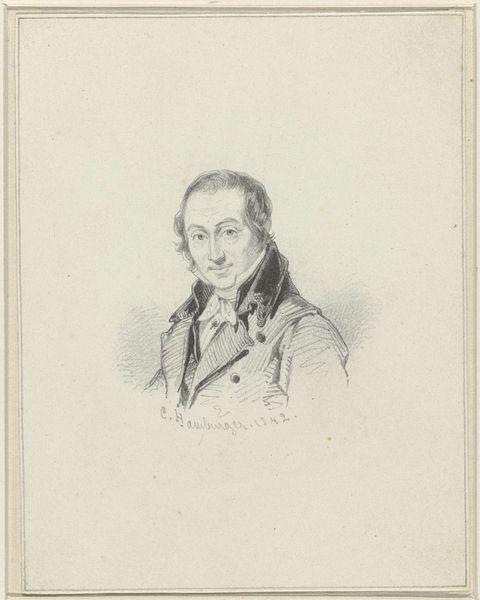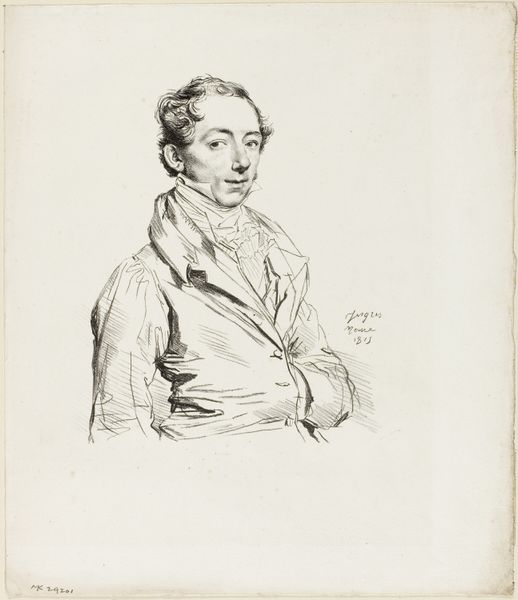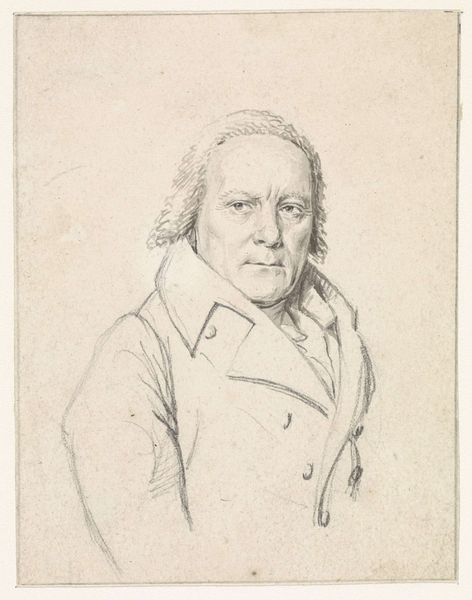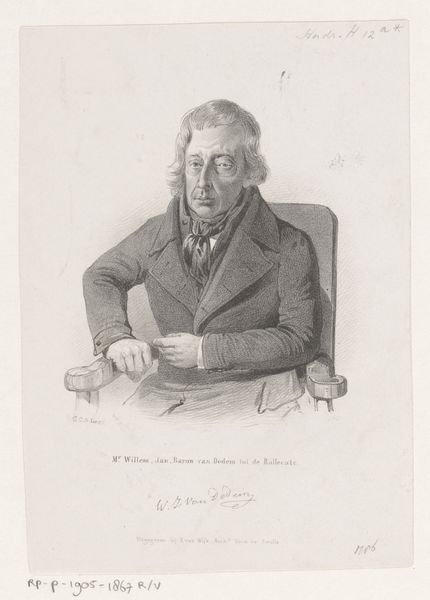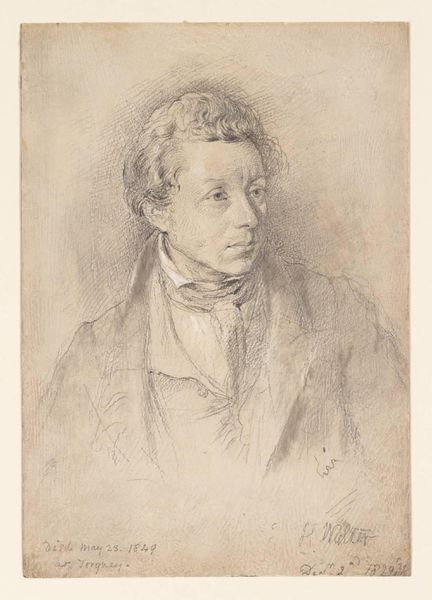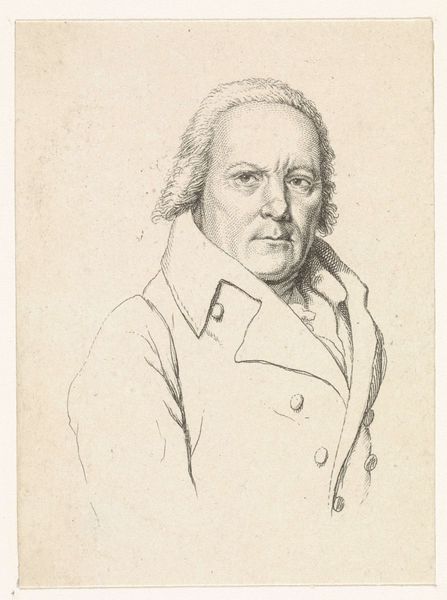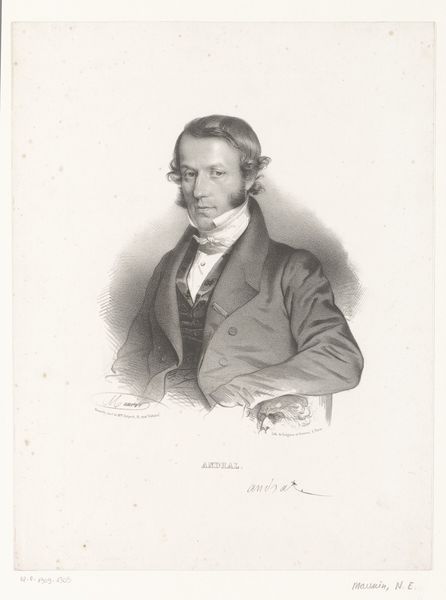
drawing, pencil
#
portrait
#
drawing
#
pencil drawing
#
pencil
#
realism
Dimensions: height 189 mm, width 154 mm
Copyright: Rijks Museum: Open Domain
Curator: Looking at this delicately rendered portrait, what strikes you first? Editor: Its reservedness, actually. The subject appears serious, yet there’s a gentle quality in the way the pencil captures his features. Who is he, and when was this made? Curator: This is a work known as 'Portret van Gerrit Lamberts' a pencil drawing. Its creation is situated sometime between 1830 and 1862 and held here in the Rijksmuseum. Editor: Knowing it's a 19th-century portrait helps frame my interpretation. The subject, clearly a man of status, embodies a certain social expectation. I'm immediately curious about how masculinity was performed and perceived in the Netherlands at this time. His posture, his gaze – it all speaks to power dynamics. Curator: Absolutely. Consider also how portraiture functioned within bourgeois society. The rise of realism coincided with the growing importance of representing individuals accurately. It becomes fascinating to investigate who was afforded the privilege of representation and who was excluded. Lamberts projects a quiet self-assurance that speaks to that status you're mentioning. Editor: There's a compelling tension between realism and idealism here. It looks like the artist used extremely thin, yet noticeable vertical pencil strokes to convey the shadow in the background which enhances Lamberts’ form without heavy detail. Is this style representative of portraiture at this time? Curator: It aligns, certainly. Artists like Jan Simon Voddigel were adapting conventions while working within expectations of social representation. To really assess, we could research similar portrait drawings and investigate how institutional exhibitions may have favored some techniques. Perhaps explore broader access to art education impacting style. Editor: Thinking about its current location, it feels important that we recognize where these representations reside within cultural institutions. Whose stories get told through art like this, and who controls those narratives today? That really frames how we engage with the artwork. Curator: Indeed, and I find analyzing the image's journey–its production, how it arrived here at the Rijksmuseum–allows deeper appreciation of how cultural capital operates. It also emphasizes continuous evaluation needed by this very institution as the art world evolves! Editor: Precisely, so as viewers leave with this art, I urge reflection on those frameworks to allow a continued intersectional narrative.
Comments
No comments
Be the first to comment and join the conversation on the ultimate creative platform.
